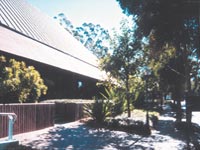|
||||||||||||||||||||||||||||||||||||||||||||||||||
| Law of Armed Conflict - LAWS8188 | ||||||||||||||||||||||||||||||||||||||||||||||||||

Description One of the most important areas of international law is the law regulating recourse to and the use of force. It is a unique body of law comprising two separate and distinct bodies of rules: the jus ad bellum, which is the law governing the legality of the resort to force, and the jus in bello, which is the law regulating the conduct of hostilities. The jus in bello is also referred to as humanitarian law, the law of armed conflict, or the laws of war. The law of armed conflict is a body of rules that was developed to protect the most vulnerable groups during armed conflict and to mitigate the deleterious effects of the methods of warfare. Unfortunately, these rules are frequently violated during armed conflicts and this gives rise to the further question of how these rules can be effectively enforced.
LLM Specialisations Recommended Prior Knowledge None
Course Objectives This course aims to:
Main Topics
Assessment Class participation (Preparation and engagement in class) 10%
Research essay (6000-8000 words) 90% Course Texts Course readers will be available for purchase from the UNSW Bookshop.
Prescribed Recommended |
||||||||||||||||||||||||||||||||||||||||||||||||||


